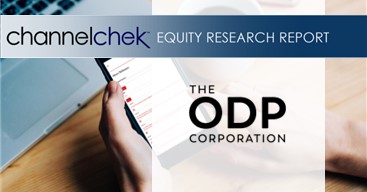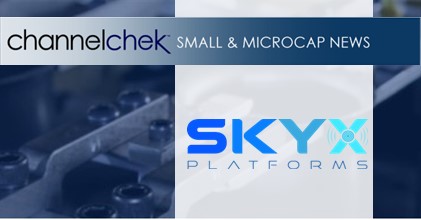
Research News and Market Data on CNDT
November 07, 2025
Key Q3 2025 Highlights
- Debt refinance completed
- Revenue and Adj. Revenue(1): $767M
- Pre-tax Income (Loss): $(38)M
- Adj. EBITDA Margin(1): 5.2%
- New Business Signings ACV(2): $111M
- Net ARR Activity Metric(2) (TTM): $25M
FLORHAM PARK, N.J., Nov. 07, 2025 — Conduent Incorporated (Nasdaq: CNDT), a global technology driven business process solutions and services company, today announced its third quarter 2025 financial results.
Cliff Skelton, Conduent President and Chief Executive Officer, stated, “Q3 represents not only a quarter where we met guidance on Adjusted Revenue and Adjusted EBITDA Margin, but also the continuation of our drive toward year-over-year revenue growth. New business signings were consistent year over year and our Public Sector businesses had a particularly strong quarter, despite the cyclical nature of government funding and the Federal government shutdown. As mentioned in Q2 earnings, we continue to be pleased with ongoing Transportation opportunities and momentum. Additionally, as a result of our operational efficiency efforts, Adjusted EBITDA and Adjusted EBITDA Margin improved both year over year and sequentially, in line with guidance. We also deployed AI enhancements with Conduent’s proprietary technology and platforms across document processing, customer experience, and fraud prevention—delivering greater efficiency for clients and further streamlining our internal operations.”
Skelton continued, “Regarding our portfolio rationalization efforts, 87% of our $1B capital allocation target has been achieved to date, and we remain on track to exceed that goal. We continue to be focused on cash generation, sales, and expanding our pipeline opportunities especially within our current client base, while maintaining more than ample liquidity through cash reserves and a recently renewed credit facility. As always, we remain confident in our team and our strategy as we continue to deliver the best value possible to our shareholders and to our clients and their end users.”
Key Financial Q3 2025 Results
| ($ in millions, except margin and per share data) | Q3 2025 | Q3 2024 | Current Quarter Y/Y B/(W) |
| Revenue | $767 | $807 | (5.0)% |
| Adjusted Revenue(1) | $767 | $781 | (1.8)% |
| GAAP Net Income (Loss) | $(46) | $123 | n/m |
| Adjusted EBITDA(1) | $40 | $32 | 25.0% |
| Adjusted EBITDA Margin(1) | 5.2% | 4.1% | 110 bps |
| GAAP Income (Loss) Before Income Tax | $(38) | $159 | n/m |
| GAAP Diluted EPS | $(0.30) | $0.72 | n/m |
| Adjusted Diluted EPS(1) | $(0.09) | $(0.14) | 35.7% |
| Cash Flow from Operating Activities | $(39) | $(13) | (200.0)% |
| Adjusted Free Cash Flow(1) | $(54) | $(6) | (800.0)% |
Performance Commentary
At the end of the quarter, Conduent maintained a cash balance of $264 million along with $198 million unused capacity under its recently renewed credit facility. During the quarter, Conduent repurchased approximately 4.7 million shares of common stock.
Pre-tax income (loss) for the third quarter of 2025 was $(38) million versus $159 million in the prior year period. This decrease is primarily caused by the divestiture-driven gain on the transfer of the Casualty Claims Solutions business.
Q3 2025 Adjusted EBITDA of $40 million and Adjusted EBITDA margin of 5.2% both increased versus the prior year period and were in line with guidance showing continued momentum toward our target margin.
Additional Q3 2025 Performance Highlights
Conduent achieved several milestones related to its technology-led solutions, contract awards, financial foundation, and client support capabilities, including:
- Announced the integration of generative AI (GenAI) and other advanced AI technologies into the Company’s government solutions to improve the disbursement of critical government benefits, enhance the citizen experience, and combat fraud in government benefit programs.
- Successfully completed the refinancing of the Company’s revolving credit facility, extending the maturity, and paying off the Term Loan A.
- Awarded a contract by the Richmond Metropolitan Transportation Authority to implement a Pay-by-Plate toll collection system supporting the transition to all-electronic tolling designed to streamline traffic for a faster, safer, and more enjoyable driving experience.
- Announced an expansion of the Company’s Philippines operations with a new facility in Lipa-Malvar to support customer experience management solutions (CXM) for a leading U.S. healthcare company.
- Expanded its FastCap® Finance Analytics solution by integrating GenAI-powered contract and spend analytics capability that enables expedited contract intake, verification of contract compliance, and identification of procurement savings and tariff-related financial exposures more efficiently and more accurately.
- Implemented Conduent’s Maven® Disease Surveillance & Outbreak Management System for the State of Delaware, helping to monitor, report, and better understand public health threats and infectious disease outbreaks.
FY 2025 Outlook(2)
| FY 2024 Actuals | FY 2025 Outlook(2) | |
| Adj. Revenue(1) | $3,176M | $3,050 – $3,100 |
| Adj. EBITDA(1) / Adj. EBITDA Margin(1) | $124M / 3.9% | 5.0% – 5.5% |
(1) Refer to Appendix for definition and complete non-GAAP reconciliations of Adjusted Revenue, Adjusted EBITDA, Adjusted EBITDA Margin, Adjusted Diluted EPS and Adjusted Free Cash Flow.
(2) Refer to Appendix for additional information regarding non-GAAP outlook.
Conference Call
Management will present the results during a conference call and webcast on November 7, 2025 at 9:00 a.m. ET.
The call will be available by live audio webcast along with the news release and online presentation slides at https://investor.conduent.com/
The conference call will also be available by calling 877-407-4019 toll-free. If requested, the conference ID for this call is 13755924.
The international dial-in is 1-201-689-8337. The international conference ID is also 13755924.
A recording of the conference call will be available by calling 1-877-660-6853 three hours after the conference call concludes. The replay ID is 13755924.
The telephone recording will be available until Nov 21, 2025.
About Conduent
Conduent delivers digital business solutions and services spanning the commercial, government and transportation spectrum – creating valuable outcomes for its clients and the millions of people who count on them. The Company leverages cloud computing, artificial intelligence, machine learning, automation and advanced analytics to deliver mission-critical solutions. Through a dedicated global team of approximately 53,000 associates, process expertise and advanced technologies, Conduent’s solutions and services digitally transform its clients’ operations to enhance customer experiences, improve performance, increase efficiencies and reduce costs. Conduent adds momentum to its clients’ missions in many ways including disbursing approximately $85 billion in government payments annually, enabling approximately 2.3 billion customer service interactions annually, empowering millions of employees through HR services every year and processing over 13 million tolling transactions every day. Learn more at www.conduent.com.
Non-GAAP Financial Measures
We have reported our financial results in accordance with accounting principles generally accepted in the U.S. (U.S. GAAP). In addition, we have discussed our financial results using non-GAAP measures. We believe these non-GAAP measures allow investors to better understand the trends in our business and to better understand and compare our results. Accordingly, we believe it is necessary to adjust several reported amounts, determined in accordance with U.S. GAAP, to exclude the effects of certain items as well as their related tax effects. Management believes that these non-GAAP financial measures provide an additional means of analyzing the results of the current period against the corresponding prior period. However, these non-GAAP financial measures should be viewed in addition to, and not as a substitute for, our reported results prepared in accordance with U.S. GAAP. Our non-GAAP financial measures are not meant to be considered in isolation or as a substitute for comparable U.S. GAAP measures and should be read only in conjunction with our Consolidated Financial Statements prepared in accordance with U.S. GAAP. Our management regularly uses our non-GAAP financial measures internally to understand, manage and evaluate our business and make operating decisions. Providing such non-GAAP financial measures to investors allows for a further level of transparency as to how management reviews and evaluates our business results and trends. These non-GAAP measures are among the primary factors management uses in planning for and forecasting future periods. Compensation of our executives is based in part on the performance of our business based on certain of these non-GAAP measures. Refer to the “Non-GAAP Financial Measures” section attached to this release for a discussion of these non-GAAP measures and their reconciliation to the reported U.S. GAAP measures.
Forward-Looking Statements
This press release, any exhibits or attachments to this release, and other public statements we make may contain “forward-looking statements” as defined in the Private Securities Litigation Reform Act of 1995. The words “anticipate,” “believe,” “estimate,” “expect,” “expectations,” “in front of us,” “plan,” “intend,” “will,” “aim,” “should,” “could,” “forecast,” “target,” “may,” “continue to,” “looking to continue,” “endeavor,” “if,” “growing,” “projected,” “potential,” “likely,” “see,” “ahead,” “further,” “going forward,” “on the horizon,” “as we progress,” “going to,” “path from here forward,” “think,” “path to deliver,” “from here,” “on track,” “remain” and similar expressions (including the negative and plural forms of such words and phrases), as they relate to us, are intended to identify forward-looking statements, but the absence of these words does not mean that a statement is not forward-looking. All statements other than statements of historical fact included in this press release or any attachment to this press release are forward-looking statements, including, but not limited to, statements regarding our financial results, condition and outlook; changes in our operating results; general market and economic conditions; and our projected financial performance, including all statements made under the section captioned “FY 2025 Outlook” within this release. These statements reflect our current views with respect to future events and are subject to certain risks, uncertainties and assumptions, many of which are outside of our control, that could cause actual results to differ materially from those expected or implied by such forward-looking statements contained in this press release, any exhibits to this press release and other public statements we make.
Important factors and uncertainties that could cause our actual results to differ materially from those in our forward-looking statements include, but are not limited to: government appropriations and termination rights contained in our government contracts, the competitiveness of the markets in which we operate and our ability to renew commercial and government contracts, including contracts awarded through competitive bidding processes; our ability to recover capital and other investments in connection with our contracts; our reliance on third-party providers; risk and impact of geopolitical events and increasing geopolitical tensions (such as the war in the Ukraine and conflict in the Middle East), macroeconomic conditions, natural disasters and other factors in a particular country or region on our workforce, customers and vendors; our ability to deliver on our contractual obligations properly and on time; changes in interest in outsourced business process services; claims of infringement of third-party intellectual property rights; our ability to estimate the scope of work or the costs of performance in our contracts; the loss of key senior management and our ability to attract and retain necessary technical personnel and qualified subcontractors; our failure to develop new service offerings and protect our intellectual property rights; our ability to modernize our information technology infrastructure and consolidate data centers; expectations relating to environmental, social and governance considerations; utilization of our stock repurchase program; risks related to our use of artificial intelligence; the failure to comply with laws relating to individually identifiable information and personal health information; the failure to comply with laws relating to processing certain financial transactions, including payment card transactions and debit or credit card transactions; breaches of our information systems or security systems or any service interruptions; risks related to hacking or other cybersecurity threats to our data systems, information systems and network infrastructure and other service interruptions, including relating to the previously disclosed cyber event that took place in January 2025, including Conduent’s investigation of such incident and mitigation and remediation efforts, the nature and extent of such incident, the potential disruption to our business or operations, the potential impact on Conduent’s reputation, and Conduent’s assessments of the likely financial and operational impacts of such incident; our ability to comply with data security standards; developments in various contingent liabilities that are not reflected on our balance sheet, including those arising as a result of being involved in a variety of claims, lawsuits, investigations and proceedings; risks related to recently completed divestitures including (i) the transfer of the Company’s BenefitWallet’s health savings account, medical savings account and flexible spending account portfolio, (ii) the sale of the Company’s Curbside Management and Public Safety Solutions businesses and (iii) the sale of the Company’s Casualty Claims Solutions business, including but not limited to the Company’s ability to realize the benefits anticipated from such transactions, unexpected costs, liabilities or delays in connection with such transactions, and the significant transaction costs associated with such transactions; risk and impact of potential goodwill and other asset impairments; our significant indebtedness and the terms of such indebtedness; our failure to obtain or maintain a satisfactory credit rating and financial performance; our ability to obtain adequate pricing for our services and to improve our cost structure; our ability to collect our receivables, including those for unbilled services; a decline in revenues from, or a loss of, or a reduction in business from or failure of significant clients; fluctuations in our non-recurring revenue; increases in the cost of voice and data services or significant interruptions in such services; our ability to receive dividends or other payments from our subsidiaries; and other factors that are set forth in the “Risk Factors” section, the “Legal Proceedings” section, the “Management’s Discussion and Analysis of Financial Condition and Results of Operations” section and other sections in our 2024 Annual Report on Form 10-K, as well as in our Quarterly Reports on Form 10-Q and Current Reports on Form 8-K filed with or furnished to the Securities and Exchange Commission. Any forward-looking statements made by us in this release speak only as of the date on which they are made. We are under no obligation to, and expressly disclaim any obligation to, update or alter our forward-looking statements, whether because of new information, subsequent events or otherwise, except as required by law.
Media Contacts
Sean Collins
Conduent
+1-310-497-9205
Josh Overholt
Conduent









